Traumatic carbine Keserű Home Defender (Hungary)
It is necessary to recall the prerequisites for the appearance of carabiners of unusual appearance. Hungary has a rather strict legislation in the field of civilian weapons. Citizens are allowed to acquire certain categories of “full-fledged” small arms for the purposes of collecting, hunting or playing sports. For self-defense, they can only use limited damage systems — a “traumatic” weapon using gas cartridges or ammunition with a spherical rubber bullet.
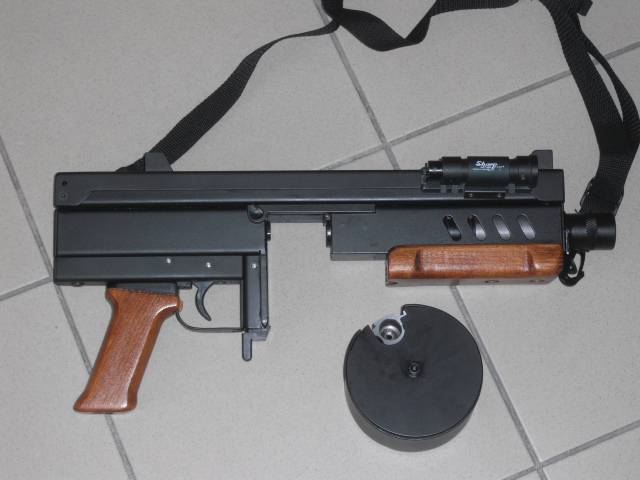
Carabiner Keserű Home Defender with 10-charging magazine
Taking into account such features of the legislation, local and foreign manufacturers offer to potential buyers samples of different classes that have some common features. In the second half of the 2000th, Keser Mkvek (Budapest) launched the Rubber Rain traumatic carbine. This product was a smooth-bore rifle with a revolving feed of cartridges. A characteristic feature of the carbine, related to the requirements of the laws, was the use of a separate-loading ammunition: the weapon had to shoot a spherical rubber bullet with a diameter of 19,3 mm, for the ejection of which the 9-mm idler turret cartridge was used.
The Keserű Rubber Rain carabiner had advantages and disadvantages. At the same time, he managed to interest citizens in need of self-defense. For several years, such a weapon was manufactured in a rather large series and was actively sold. However, soon the company "Keseru Myuvek" decided to abandon the carbine of the first version in favor of its improved version.
Recycling the original project did not take long, and at the beginning of 2010, a new special carbine appeared in the Hungarian gun shops. The upgraded version of the Rubber Rain base was called the Home Defender. When creating new modifications of weapons such designation was preserved, although it could be modified or supplemented by new letters.
In the new project Home Defender, the basic features of the base sample were retained. At the same time, much of the parts of the weapon underwent one or another alteration. As a result, the appearance, dimensions and ergonomics of the weapon have changed. First of all, “Home Defender” differed less complex forms, which was associated with a simplified design of the receiver. In addition, instead of a movable front handle recharge, which now could use the traditional sliding handguard.
In the new project, the carbine receiver was a rectangular unit of constant cross-section, assembled from the main unit and the top cover. The front of the box contained the trunk and served as its casing. For the flow of air to the barrel in the sides of the box appeared sloping slots. In the center of the receiver provided for a large cutout, designed to install the store of one of two types. The rear unit receiver accommodates the details of the firing mechanism. Under the barrel cover, depending on the configuration, there could be a vertical handle or a sliding forearm. Under the casing USM secured grip fire.
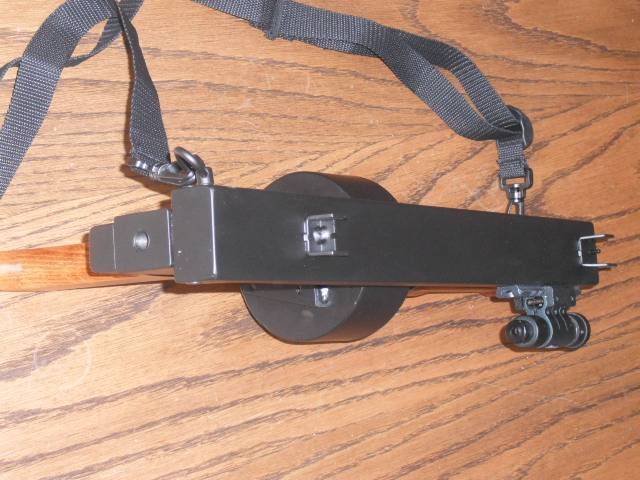
View of sights
Product Keserű Home Defender received a smooth barrel of medium length caliber 19,3 mm. It is curious that in earlier documents and promotional materials the carbine was listed as 18-millimeter. In the breech bore provided for thickening for installation in the receiver. Before the breech on the trunk there was a return spring used in the recharge system. A movable block was worn on the barrel with a longitudinal channel to which a handle or forearm was attached to the bottom. On top of the block was set thrust to control the cocking and supply of ammunition. Unlike the base Rubber Rain, all the main parts of the recharge system were placed inside the receiver. Outside of it, for obvious reasons, only the handle / handguard remained.
In the rear volume of the receiver positioned trigger mechanism. A shock type system was used. The latter moved along the axis of the weapon and cocked with the help of the thrust of the front handle. Fire control was carried out using a traditional trigger. Fuse not provided. At the same time there was a simple indicator arming USM. The tail of the drummer with a bright color in the cocked position went out through the hole in the rear wall of the receiver.
With the new traumatic Keserű Home Defender carbine, it was proposed to use existing drum shops that were previously developed for the Rubber Rain product. In this case, only shops for 10 cartridges went into action. From the larger stores on 24 shot decided to give up due to their excessive size and weight. As before, the store, using its own fasteners, advanced on the guide of the receiver and was fixed in its place with an uncomplicated latch.
The shop from the company "Keseru Myuvek" had a cylindrical metal body with a notch in the upper part, with which the chambers were to interact with the barrel. The main part of the store was a large aluminum drum, near the edge of which cavities were drilled for blank cartridges and rubber bullets. Chambers for the latter were in the front of the drum, cavities for shells with a propellant charge - in the rear. The weapon did not have its own means of extracting the spent cartridge case, so they had to be knocked out manually when preparing the store.
The drum was installed inside the body on the axis and could freely rotate on it. The rotation of the drum was controlled by the standard means of the weapon itself. The movable longitudinal thrust connected to the reloading handle had a lower pin. On the outer surface of the drum, in turn, curved grooves were provided. When the reloading handle was moved backward, the pin of the thrust rested against the wall of the groove and made the drum rotate, bringing another bore with a rubber bullet to the barrel.
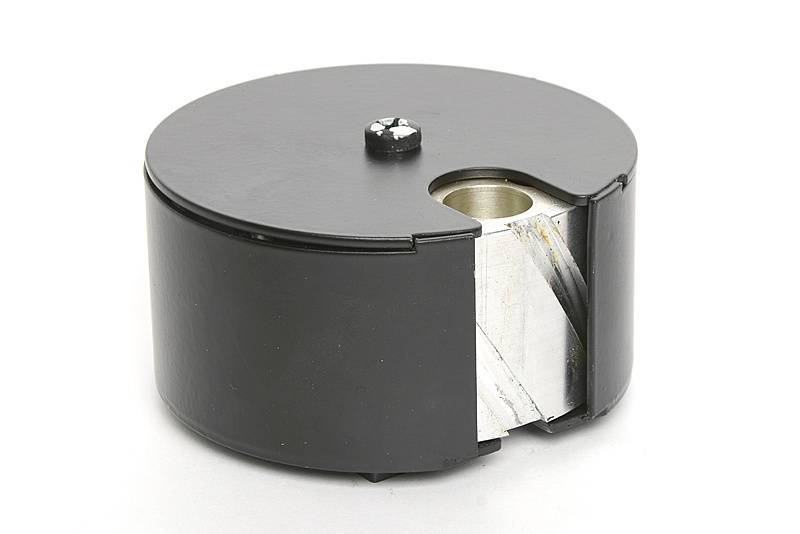
Shop on 10 Blank Cartridges and 10 Rubber Bullets
The first traumatic carbine from Keserű Művek had the simplest aiming devices in the form of a fly mounted on a relatively high base. The new project Home Defender included the use of a more advanced sight. On the front of the receiver cover set unregulated front sight. Behind on the same cover the simplest rear sight was located. The weapon had not the highest firing characteristics, and full-fledged aiming devices could hardly seriously improve the accuracy and accuracy of fire. However, the new pillar was clearly not superfluous.
If desired, the shooter could equip his carbine with any compatible device. For installation of lamps, laser designators, etc. on the sides of the front of the receiver there was a pair of standard Picatinny rail.
The Rubber Rain carabiner had specific ergonomics: it had to be held by the two handles without any rest. Relative convenience was provided only when shooting from the hip, and the appliance to the shoulder was not provided. All this in a known manner spoiled the accuracy and efficiency of the fire.
In the Home Defender project, the ergonomics were seriously reworked. Now the second hand could lie both on the handle and on the mobile forearm, depending on the product configuration. The most important innovation was the folding butt. It was made of thick metal wire. The butt had a pair of longitudinal elements connected by a U-shaped shoulder rest. Longitudinal butt rods moved in tubes attached to the sides of the receiver. If necessary, the butt could be dismantled. Some modifications of the Home Defender did not have it at all.
Despite the most noticeable differences, the new Keserű Home Defender carbine in its dimensions and characteristics hardly differed from the base Rubber Rain. The length of the product did not exceed 550-600 mm with a mass of the order of 4-5 kg. The idle revolver cartridge allowed the spherical pool to give energy to 120 J. As a result, the effective range of fire did not exceed a few meters. At long distances, the bullet quickly lost energy. The rate of fire depended solely on the physical capabilities of the shooter, namely on his ability to quickly move the reload handle.
According to reports, the first batches of the traumatic carbines of the new model were noticeably different from the subsequent ones. The first serial Home Defender were completed with wooden fittings, which included a movable forearm. For one reason or another, Keserű Művek decided not to equip serial rifles with a front vertical grip. In addition, the first "Defenders" had no stock. Thus, despite the different form of a number of basic details, the self-defense weapon of the new model resembled the previous model of its class.
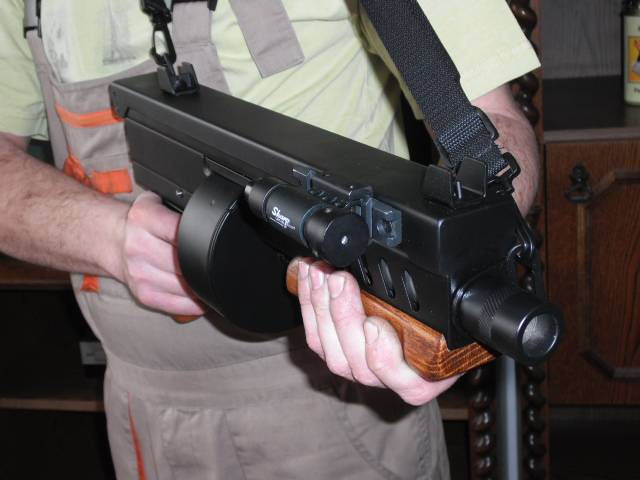
Home Defender in the hands of an arrow
Later, production of recycled Home Defender was launched. Probably, as a result of the analysis of the wishes of customers, the manufacturing company returned the plastic accessories. In addition, the forend replaced the usual front handle. Finally, newer carbines were completed with a simple wire butt. The rest of the samples of different series did not differ from each other.
Despite the design improvements and the introduction of new parts, the serial "Home Defenders" of different parties were sold at the same price. In the retail sale for such weapons they asked about 80 thousand forints - about 300 euros.
In the middle of 2010, information appeared about the imminent appearance of a new modification of the Keserű Home Defender carbine. This version of the weapon was intended to use the cartridge type 12 / 35. Apparently, it was a unitary ammunition with a rubber bullet 12-caliber (nominally 18 mm). As far as is known, this version of the traumatic weapon was not brought to mass production and sales.
Probably, the project had to be abandoned due to limited commercial prospects. Hungarian laws do not allow civilians to use traumatic weapons for a unitary cartridge with a rubber bullet, and government agencies might not show interest in the proposed modification of the Defender. Export potential carbine caused some doubts. In this case, the most logical solution was to abandon the project.
Over time, the company Keserű Művek has launched the release of traumatic carbines in several configuration options. In addition, it was decided to return the large-capacity stores, which allowed the 24 to be shot without replacement. Thus, anyone who wants to protect themselves and their home, at an affordable price, could purchase a weapon in the most interesting configuration. It was possible to choose a product with a forearm or grip, with or without a stock, and with a magazine of a particular container. There is reason to believe that the choice has a positive impact on sales.
As in the case of the first traumatic carbine, the new weapon under the “Keseru” brand sold well and confidently kept in its niche of the civilian arms market. However, the development company did not intend to maintain the current state of affairs and refuse to further develop its weapons. In 2011, a new version of the self-defense weapon was introduced, developed on the basis of proven and proven solutions.
This time the Hungarian gunsmiths decided not to engage in a serious restructuring of the architecture and processing mechanisms. In a project called Home Defender Módosított (“modified”), the existing structure was modified to give it a new look. The new Keserű HDM carbine was made as close as possible to the AMD-65 army machine. However, the similarity with military weapons was achieved only through a few external details. The drum shop, the “pump action” mechanic and the double-action trigger remained in place.
A little later, the HDM carbine was again refined, with the result that a new model appeared, similar to the Home Defender of the first version. There were also created several versions of weapons in different versions. Thus, the whole family of self-defense weapons re-entered the market, each representative of which had certain features. Soon it allowed to refuse the further release of "Home defenders" of the first version. On the market, they were completely replaced by the newer Home Defender Módosított.
For several years, the Hungarian arms company Keserű Művek managed to release up to several thousand Home Defender traumatic carbines. Being a modified and improved version of the already existing Rubber Rain, the new “Home defender” was also able to interest potential buyers. Later, the success of two predecessors was repeated by the upgraded version of Home Defender.
Taking into account the special requirements of the legislation, the company Keseru Myuvek was able to create an interesting version of weapons designed for the self-defense of civilians. On the basis of the first sample of this kind, several new carbines with certain features were created. This allowed the manufacturer to strengthen its position in the market, as well as make good money on the supply of finished products.
On the materials of the sites:
http://keseru.hu/
https://all4shooters.com/
https://casatic.livejournal.com/
http://kickgunner.blog.hu/
- Ryabov Kirill
- Keserű Művek / keseru.hu, Kickgunner.blog.hu
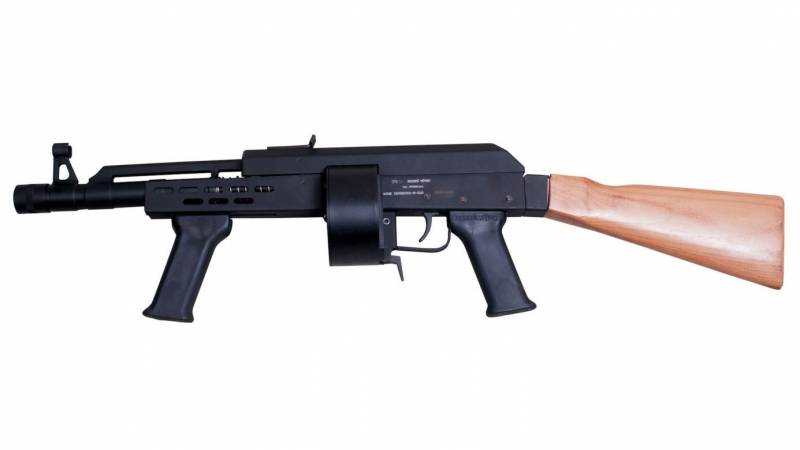
Information